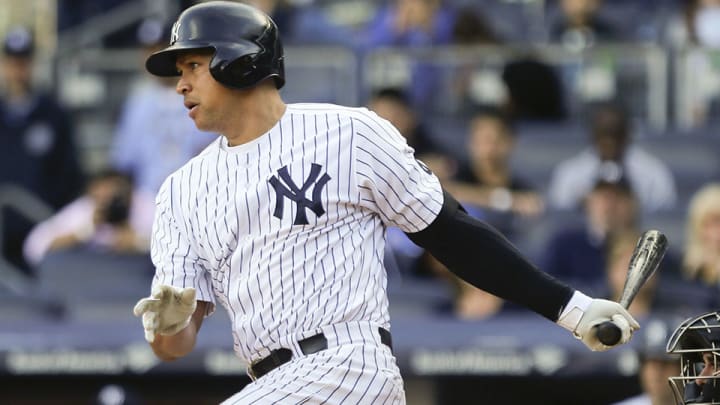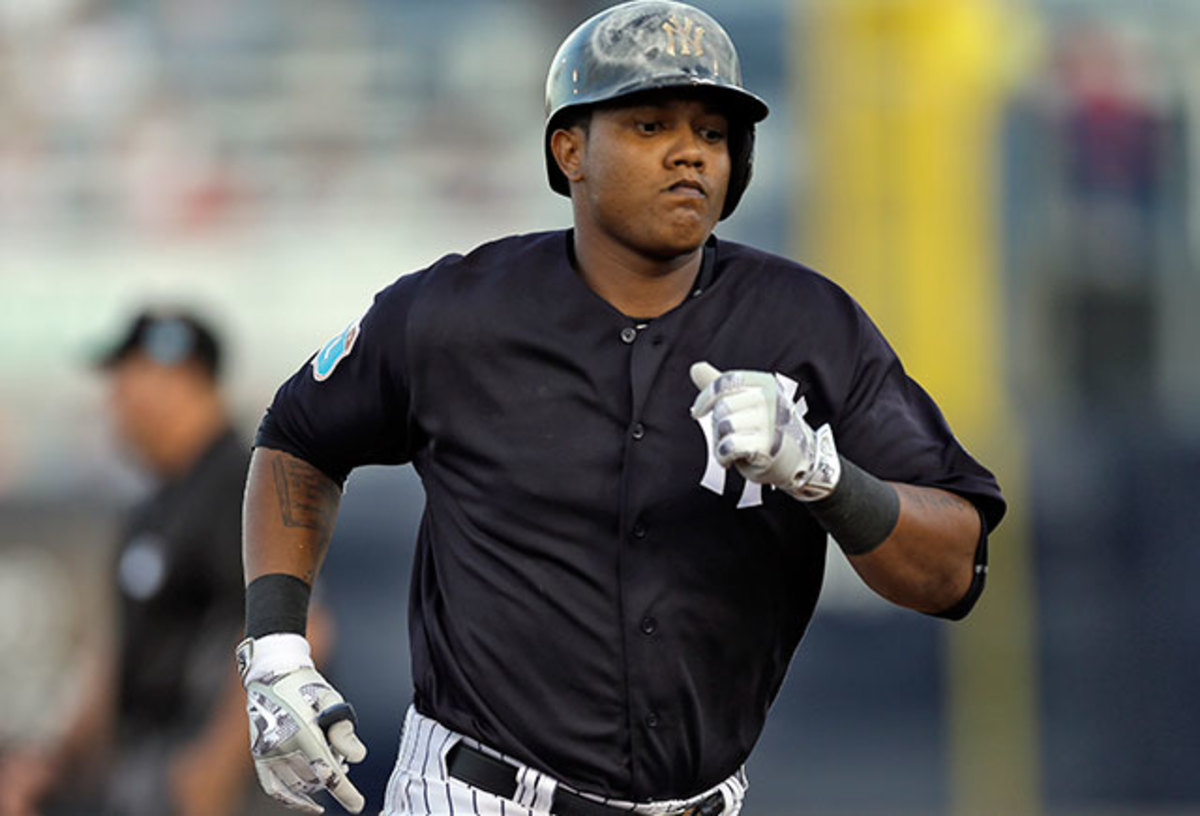2016 MLB season preview: New York Yankees

This week, SI.com is previewing all 30 MLB teams for the 2016 season, counting down to the No. 1 team in the league. At No. 15: the New York Yankees.
2015 Record and Finish:
87–75 (.537), second place in American League East (ninth overall), first place in AL wild card (lost wild-card game to Astros)
2016 Projected Record and Finish:
83–79 (.512), fourth place in AL East
The Case For
Do what you want to the Yankees: Lock them in a safe and toss it into the ocean, tie them to railroad tracks ... it simply doesn’t matter. New York will stagger its way toward contention every season anyway. The Yankees proved that once more last year, when an aging roster full of question marks nonetheless found its way to 87 wins and a wild-card spot—and that was only after a red-hot Blue Jays team knocked New York out of first place in the AL East late in the year.
Little has changed from 2015. The veteran core that drove that team remains in place, led by the seemingly ageless Alex Rodriguez, who shocked the league by hitting a team-high 33 home runs at age 40. At 35, Mark Teixeira pulled out of his late-career nosedive to bash 31 homers and lead the team in OPS+ (147) and Wins Above Replacement (3.8). Carlos Beltran, 38, suffered through an abysmal April (.162/.216/.265), then posted an .862 OPS from May 1 onward. Brian McCann, in his age-31 season, saw a modest uptick from his uninspiring debut year in pinstripes, hitting 26 homers and improving his on-base percentage by nearly 40 points. Everyone is a year older, but all remain dangerous and capable hitters in a lineup with no easy outs.
It’s not just the old guard that kept the Yankees chugging forward. For the first time in what felt like ages, New York got an injection of youth in its lineup and rotation, particularly with Didi Gregorius at shortstop and with Luis Severino in the starting rotation. The 25-year-old Gregorius struggled mightily in his first six weeks as Derek Jeter’s replacement, but he rebounded to finish third on the team in WAR with 3.3. The 22-year-old Severino, meanwhile, made his major league debut in August and provided a huge boost to a thin rotation, with a 137 ERA+ and 8.1 strikeouts per nine in his 62 1/3 innings down the stretch. Both will be counted on heavily this season.
To that young group, the Yankees add Starlin Castro, just 26 years old and now manning second base instead of shortstop. A three-time All-Star for the Cubs, Castro was a revelation for Chicago in the second half after moving to the keystone, hitting .353 from Aug. 11 onward. He wasn’t a fit in the Cubs’ crowded infield, but in New York, he could be the solution at a position that has been in flux since Robinson Cano left for Seattle after the 2013 season.
The youth parade doesn’t stop there. The Yankees’ farm system bore fruit last year, as Severino, outfielders Mason Williams and Slade Heathcott, infielder Rob Refsnyder and first baseman Greg Bird—the latter two of whom started the team’s wild-card game loss to the Astros—all made their big-league debuts. There’s more talent headed to the Bronx in the coming seasons. Outfielder Aaron Judge, 23, is a 6’7” monster boasting the kind of raw power that makes scouts drool; shortstop Jorge Mateo, 20, is a lightning-fast runner with an aggressive bat. Together with 2015 first-rounder James Kaprielian, a righthanded pitcher out of UCLA, and catching prospect Gary Sanchez, they provide minor league depth should New York’s veteran horses stumble this summer.
But the Yankees’ greatest strength lies in the three men who will make opposing lineups come to dread the late innings: Aroldis Chapman, Andrew Miller and Dellin Betances. Together, those three—each among the best strikeout artists in baseball—should dramatically shorten games, and if New York once again defies age to make the playoffs, that trio could have a Royals-like impact for manager Joe Girardi in October.
The Case Against
Despite reaching the playoffs for the first time since 2012, the Yankees’ age did seem to catch up with them, even before they were easily dispatched from the postseason by Houston. Rodriguez, after a blistering start, wheezed his way to a .216/.344/.448 line in the second half as the grind of his first season of more than 150 games since 2008 seemed to wear him down. Teixiera once again was unable to avoid injury, suffering a season-ending broken leg in late August. Injuries also spoiled Jacoby Ellsbury’s season, as the centerfielder posted a career-worst .663 OPS and just 1.9 WAR in the third year of what’s looking like a colossally bad eight-year, $153 million contract for the 32-year-old outfielder with a history of injury problems.
It’s hard not to be concerned about the durability and productivity of a lineup in which Castro and Gregorius are the only hitters under 30 and that features such injury-prone players as Teixeira, Ellsbury and Brett Gardner (who has been dealing with a persistent wrist ailment this spring). Depth will be crucially important to this year’s Yankees, and while the likes of Judge and Sanchez could help, they’re still unproven. Worse, the one young hitter who did get an extended taste of the majors last season—Bird—will miss the season after injuring his shoulder, robbing New York of a competent fill-in at first base or designated hitter if either Teixiera or Rodriguez go down.
Durability and depth are the key concerns in the rotation as well, where Girardi will have to cobble together 1,000 innings out of the quintet of Severino, Masahiro Tanaka, Michael Pineda, Nathan Eovaldi and CC Sabathia. Whether anyone in that group will even break the 175-inning mark is up in the air. Tanaka and Pineda have been stellar when healthy, but their careers to date have been been as notable for MRIs as ERAs. Both Sabathia’s physical condition and velocity are in steep decline, and it will be something of a minor miracle if he can make it through the season in one piece. That puts a heavy load on the young arms of Eovaldi, 26, and Severino, and while the latter has fantastic stuff, his peripherals (a 4.37 FIP and 1.3 home runs per nine last year) are a scary sight.
• MORE MLB: AL breakout candidates | AL busts | AL rookies to watch

X-Factor: Starlin Castro, 2B
New York’s biggest (and only) off-season addition to the starting lineup, Castro wore out his welcome in Chicago’s North Side after six frustrating seasons. There’s no denying his talent, but there’s also no denying these uninspiring factors: a career 97 OPS+; a .321 on-base percentage and 4.9% walk rate; an alarming propensity for bad base running decisions; lackluster defense; and an at-times poor attitude. While the cost for acquiring Castro wasn’t high, the Yankees did have to surrender a useful arm in righthander Adam Warren, who gave New York valuable innings out of the bullpen and in the rotation last year.
The move off shortstop last August seemingly reinvigorated Castro, but he’s still a largely unproven second baseman with a history of mental lapses and a less-than-sterling clubhouse reputation who was one of the NL’s least productive hitters over the last three years (his 89 OPS+ in that span ranks 17th-lowest in the Senior Circuit among hitters with at least 1,000 plate appearances). Castro represents a major project for the Yankees, albeit one who offers immense upside. It’s hard to tell if his resurgence was the result of a real change at the plate or simply a small-sample-size success story. But if Girardi and his coaches can get Castro properly motivated and back on track, he can be a difference maker.
Number To Know: 0
For the first time in the four decades of free agency, the Yankees went an entire off-season without signing a single player on the open market to a major league contract. Instead, all of New York’s winter shopping came via trades or minor league deals, with Castro, Chapman and reserve outfielder Aaron Hicks (acquired from the Twins for backup catcher John Ryan Murphy) as general manager Brian Cashman’s lone additions to the big-league roster. The reasons for Cashman’s apparent disinterest in the free-agent market make sense (the money could be better spent on 2018’s potential winter bonanza, and ownership has made no secret of its desire to get the team’s perennially bloated payroll under the luxury tax limits). But regardless of why the Yankees weren’t as active on the hot stove as they have been since the dawn of time, the results are the same: New York enters the season with much the same roster as it had last year.
It’s hard to argue against the idea that signing over-30 free agents to nine-figure deals for multiple years is a fool’s gambit, especially for a team that’s been burned by that approach countless times. For proof, look at the money still being handed out to Sabathia ($25 million guaranteed this year and, if he reaches his vesting option, next), Rodriguez ($20 million each of the next two years), Teixeira ($22.5 million this season) or Ellsbury ($105 million through 2020). With the contracts for the first three of those players set to expire no later than the end of 2017, Cashman and his team are well set up for future free-agent runs at young superstars like Bryce Harper and Jose Fernandez. But the top players on this past winter’s market, like starting pitcher David Price and outfielder Jason Heyward, could have helped the Yankees right now, turning what looks like an also-ran into a true World Series contender.
Time will tell if Cashman’s strategy will pay off, but it’s odd to see a winter go by without the Yankees spending millions like Montgomery Brewster. And if the team falls short once again this season and the championship window for New York’s veterans shrinks by one more year, that spending clampdown could feel like an instance of being penny wise but pound foolish.
The SI Extra Newsletter Get the best of Sports Illustrated delivered right to your inbox
Subscribe
Scout’s Takes
Most Overrated: Michael Pineda, SP
“I don’t think he’s overrated, but he’s underachieved—his inability to go out and give them what they thought they were going to get on a regular basis.”
Most Underrated: Dellin Betances, RP
“What he’s done has been amazing. Two years ago at this time, he was out of options and throwing just okay, and now he’s an All-Star who averages 15 strikeouts per nine innings.”
